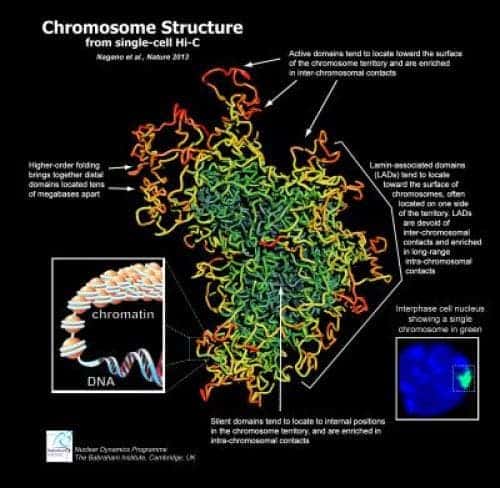The X-Shape in which we usually see chromosomes depicted in is only a snapshot of their real complexity – a new method for visualizing them showed.
A joint project involving the Babraham Institute, the University of Cambridge and the Weizmann Institute has produced the most beautiful and accurate models of chromosomes available up to date.
“The image of a chromosome, an X-shaped blob of DNA, is familiar to many but this microscopic portrait of a chromosome actually shows a structure that occurs only transiently in cells — at a point when they are just about to divide.”, explains Dr Peter Fraser of the Babraham Institute.
The team has developed a new, complex method of visualizing their shape, which involves creating thousands of molecular measurements of chromosomes in single cells, using the latest DNA sequencing technology. Blending in these microscopic measurements and supercomputers, they created a three-dimensional portrait of chromosomes for the first time.
“These unique images not only show us the structure of the chromosome, but also the path of the DNA in it, allowing us to map specific genes and other important features. Using these 3D models, we have begun to unravel the basic principles of chromosome structure and its role in how our genome functions.”
This latest research puts DNA in a proper visual context in a cell, showing the beauty and complexity which go hand in hand in the mammalian genome; it also highlights the effectiveness in which it works, and ultimately, how it is responsible for health, aging and chromosomal aberrations.
“Until now, our understanding of chromosome structure has been limited to rather fuzzy pictures, alongside diagrams of the all too familiar X-shape seen before cell division. These truer pictures help us to understand more about what chromosomes look like in the majority of cells in our bodies. The intricate folds help to unravel how chromosomes interact and how genome functions are controlled.”




